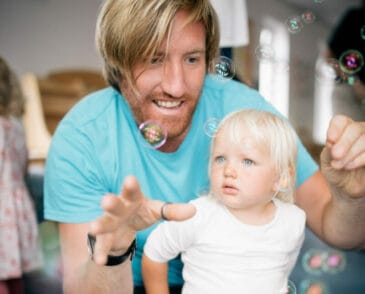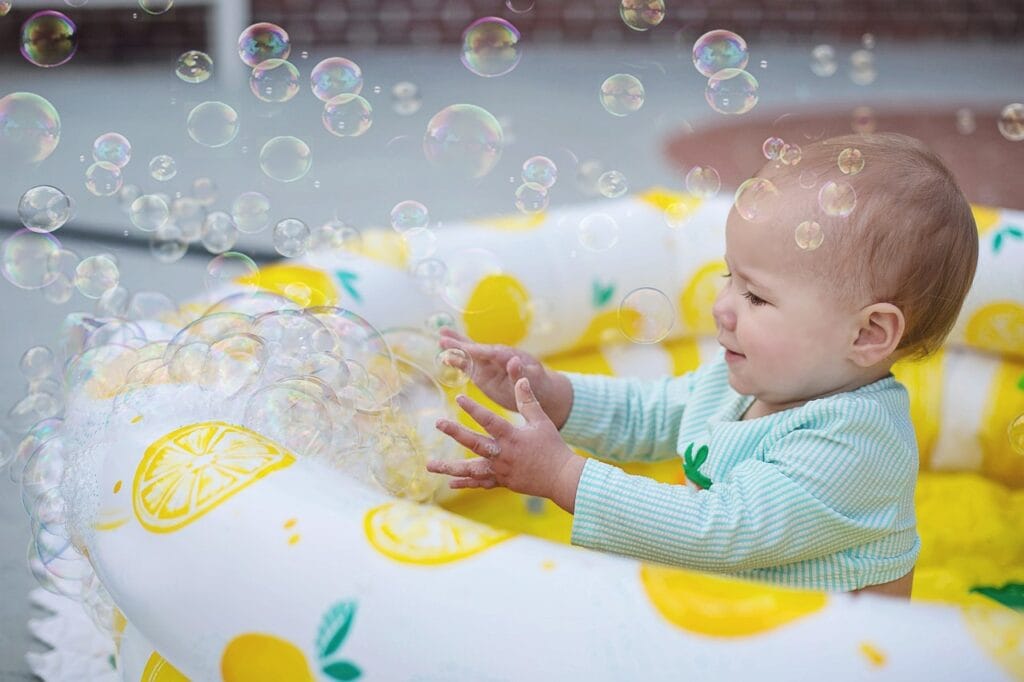

Last Updated - November 14, 2024
Sensory Play
Babies and toddlers are constantly developing and a big part of how they learn is through their senses. It
is great to give them opportunities to explore through stimulating, sensory play.
Before children use and understand language, they make sense of the world around them using their senses. First they want to find out what objects are like. To do this, babies use their senses to mouth objects to help them discover more.
As a baby becomes more mobile, they become keen to explore how they can make an object interact with the environment and so explore what they can do with it to an ever greater extent. Then they want to find out what the object can become. As their language develops, they use their imaginations to find a functional use for the object.
Sensory play is a vital part of early childhood development, allowing children to make sense of the world around them through their senses. By engaging children in sensory activities, children develop language skills, problem solving abilities, fine and gross motor skills and cognitive growth. Find out more about sensory play and why it is great for your child’s development here.
Did you know?
Sensory experiences build nerve connections within the developing brain’s neural pathways. You can find out more about brain development here.
You can help stimulate the senses in the following ways
- Smell – scented playdough, oranges, herbs added to water.
- Sight – Mirrors, bold contrasting colours (black & white for babies), bubbles.
- Taste – jelly, cooked spaghetti, cooking together.
- Hearing – Foil blanket, shakers and bells, saucepans and wooden spoons.
- Touch – Wood, metal, ice, shells, fir cones, pebbles.
- Vestibular (sense of balance) Action songs, rolling, jumping, crawling, hanging upside down.
- Proprioception (awareness of position and movement of the body – Pushing and pulling objects, cardboard boxes, riding trikes/bikes.
Here’s some ideas you can try at home.
Playdough
This super-easy playdough recipe is the perfect way to spend a rainy afternoon inside. It’s quick enough to hold a young child’s attention and you only need a few store cupboard ingredients.
Little hands can play with the results straightaway, so there’s immediate fun for all involved!
Lots more information and ideas from BBC Tiny Happy people
Bubbles
Blowing bubbles can help to develop motor skills, visual skills and oral language.
Blowing long streams of bubbles strengthen a child’s core muscles and promote eye
contact.
If you’ve run out of store-bought bubble mixture or need a quick entertainment idea for the kids, it’s easy to make your own bubbles from washing-up liquid and water. But what’s the perfect ratio, and what can you use if you don’t have a bubble wand?
To make the bubble mixture
- 1 Dessertspoon of caster sugar
- 2 Dessertspoons of washing up liquid.
- 1 Cup of warm water
Mix it all together until dissolved and have fun.

Homemade bubble wands
If you don’t have a wand from a store-bought pot of bubbles, don’t despair! You can have fun by looking for different items around the house that can be used to make bubbles. Here are some ideas to get you started:
- Paperclips – bend them into wands or use as they are
- Straws
- Biscuit cutters
- Pipe cleaners
- Fly swatters
View or download our bubble recipe here.
Ice play for babies
One of the best thing about activities with ice, is that they address all 5 senses. If a child has a sensory processing need or not, sensory play is a vital part of a child’s development. Ice makes an amazing sensory play material and it is practically free.
Benefits: Toddlers and children process information through their senses. Sensory play is unstructured and is the purest sense of exploratory learning.
Adult supervision required at all times.
What you need:
- Ziplock bag
- Ice Food colour {optional)
- Lemon juice (optional)
- Towels
Fill the ziplock bag with ice and secure it. Encourage the child to explore.
Tips: When the child is ready to explore more, you can start introducing the ice in a tray with plastic toys. You can also use lemon flavour to explore taste. Enjoy exploring with your baby!
